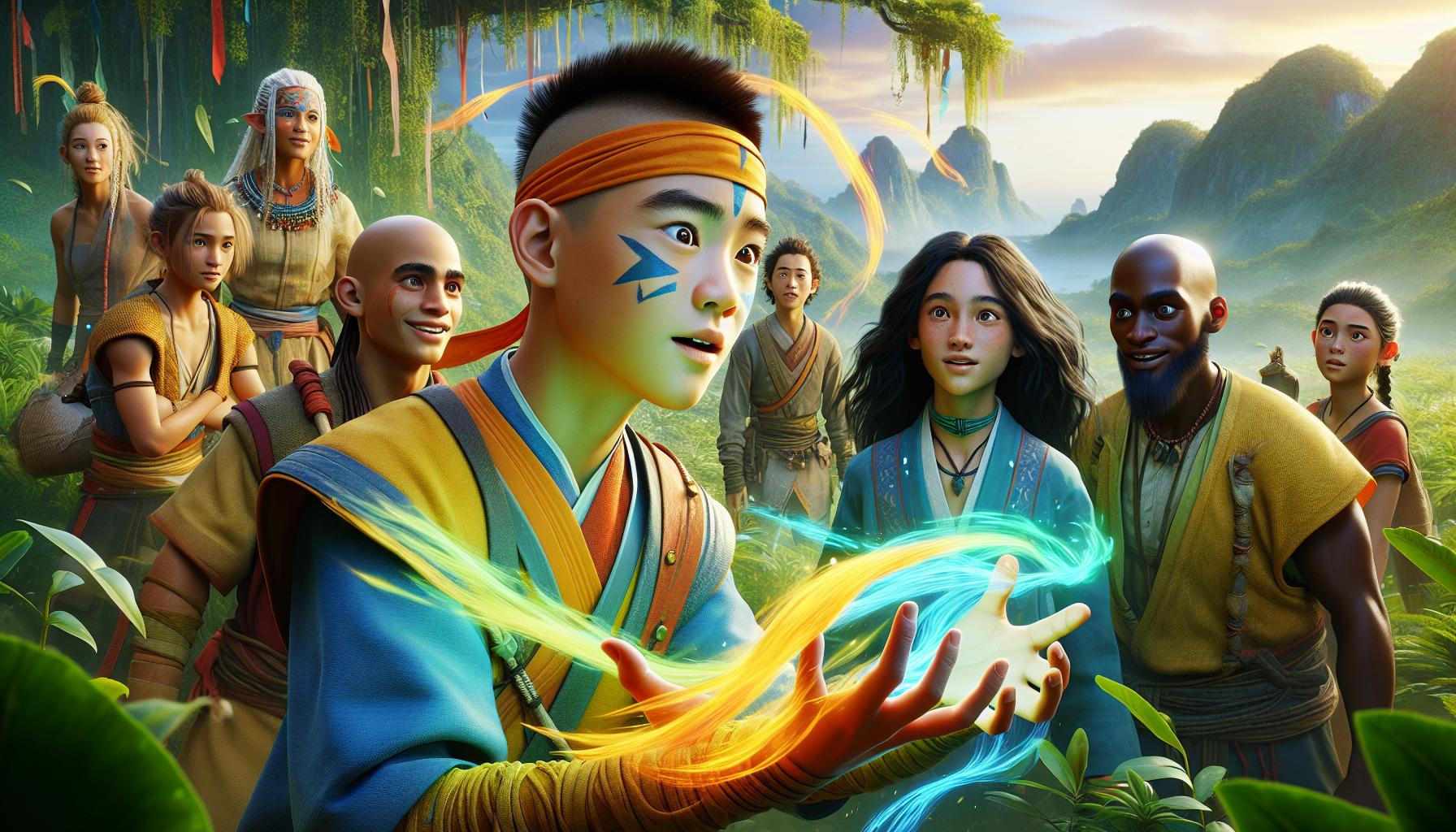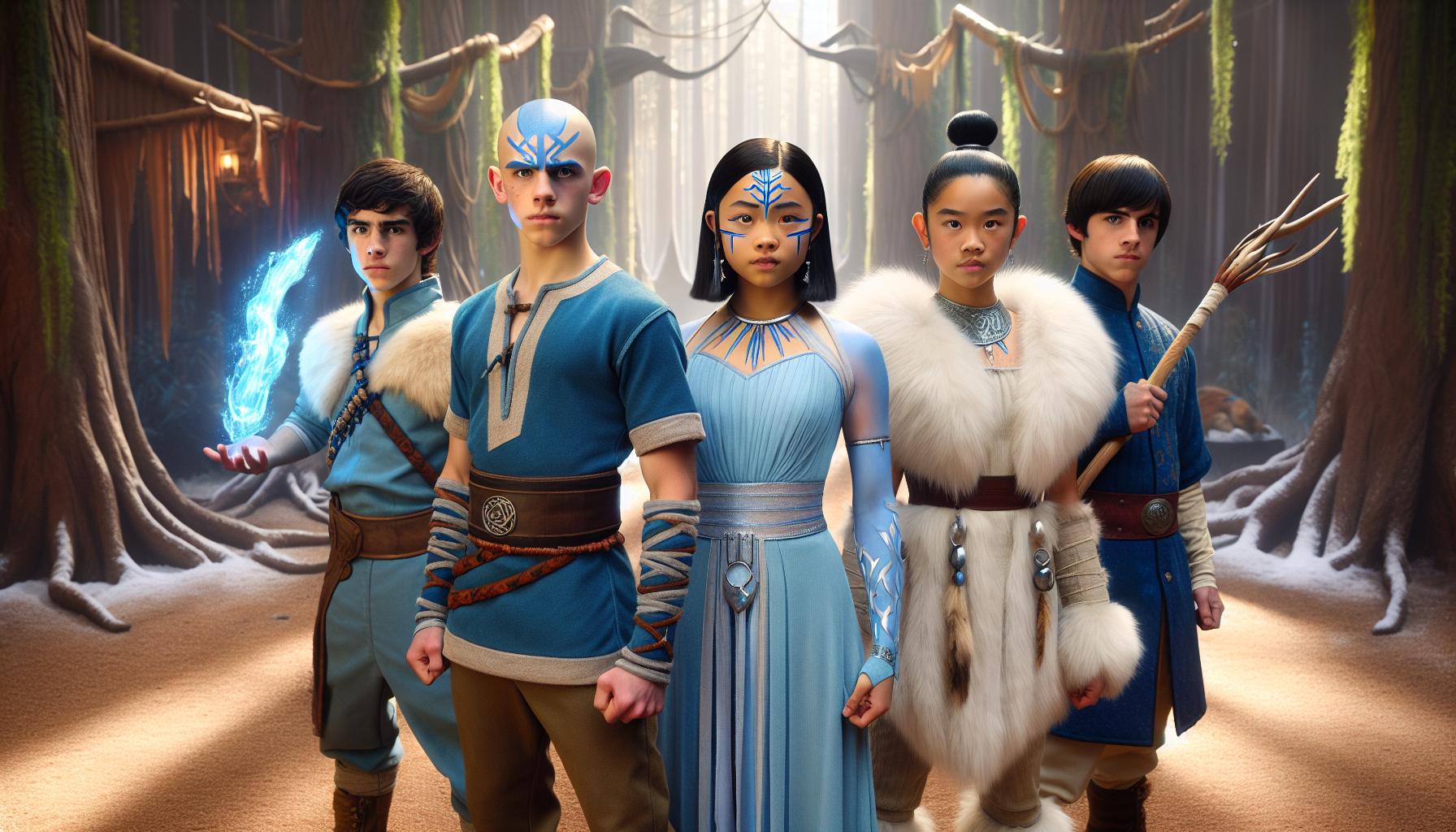
As a devoted fan of the animated series Avatar: The Last Airbender Netflix Release Date I’ve been eagerly anticipating its live-action adaptation on Netflix. The streaming giant’s announcement of this project has sparked excitement and curiosity among fans worldwide.
While the original series captivated audiences with its rich storytelling and stunning animation, the prospect of seeing Aang, Katara, and Sokka brought to life in a new format is thrilling. Netflix’s commitment to reimagining this beloved franchise has left many wondering about the release date and what to expect from this ambitious undertaking.
Key Takeaways
- Netflix’s live-action adaptation of Avatar: The Last Airbender Netflix Release Date is highly anticipated, with no official release date announced yet
- Production began in November 2021, with filming wrapped and the show currently in post-production as of early 2023
- The series boasts a $15 million per episode budget, promising high-quality visual effects and production value
- A diverse cast includes Gordon Cormier as Aang, Kiawentiio Tarbell as Katara, and Daniel Dae Kim as Fire Lord Ozai
- The adaptation aims to balance faithfulness to the original animated series with new storytelling opportunities in the live-action format
Avatar: The Last Airbender Netflix Release Date
Netflix’s acquisition of Avatar: The Last Airbender Netflix Release Date marks a significant milestone in the franchise’s history. The streaming giant announced its plans for a live-action adaptation in September 2018, sparking excitement among fans worldwide. This move came after years of speculation about the future of the beloved animated series.
The journey to Netflix wasn’t without its challenges. The original creators, Michael Dante DiMartino and Bryan Konietzko, were initially involved in the project but departed in June 2020 due to creative differences. This departure raised concerns among fans about the adaptation’s faithfulness to the source material.
Despite these setbacks, Netflix remained committed to bringing the world of Avatar to life. The streaming platform assembled a diverse cast and crew, emphasizing authenticity in representation. They’ve also invested heavily in state-of-the-art visual effects to recreate the bending abilities that are central to the show’s premise.
Netflix’s track record with anime and animation adaptations, such as “The Witcher” and “Castlevania,” has bolstered confidence in their ability to handle beloved franchises. Their commitment to high production values and willingness to invest in quality content aligns well with the expectations set by the original “Avatar: The Last Airbender” series.
As anticipation builds, fans eagerly await more details about the adaptation’s release date and how Netflix plans to translate the intricate world of benders and spirits to a live-action format. The journey of “Avatar: The Last Airbender” to Netflix represents a new chapter in the franchise’s legacy, potentially introducing the series to a wider global audience.
Netflix’s Live-Action Adaptation: What We Know So Far

Netflix’s live-action adaptation of “Avatar: The Last Airbender” has been shrouded in mystery, but some key details have emerged. Here’s a breakdown of what’s been revealed about the creative team and casting choices.
The Creative Team Behind the Series
Albert Kim serves as the showrunner, writer, and executive producer for the adaptation. Kim’s experience includes work on “Sleepy Hollow” and “Nikita,” bringing a blend of fantasy and action expertise to the project. Joining Kim are executive producers Dan Lin, Lindsey Liberatore, and Michael Goi, who collectively bring a wealth of experience in television production and cinematography. Goi, known for his work on “American Horror Story,” also directs some episodes alongside Roseanne Liang and Jabbar Raisani.
Casting Choices and Fan Reactions
The casting for the live-action series has been a hot topic among fans. Gordon Cormier, a 12-year-old Canadian actor, was cast as Aang, the titular last Airbender. Kiawentiio Tarbell takes on the role of Katara, while Ian Ousley portrays Sokka. Daniel Dae Kim, known for his roles in “Lost” and “Hawaii Five-0,” was cast as Fire Lord Ozai. These choices have largely been met with positive reactions from fans, particularly due to the commitment to casting actors of Asian and Indigenous descent, aligning with the show’s cultural inspirations. However, some concerns were raised about the age differences between the actors playing the main trio, as they differ slightly from the original animated series.
Anticipated Release Date for Avatar: The Last Airbender on Netflix

Netflix’s live-action adaptation of Avatar: The Last Airbender has generated significant buzz, but the exact release date remains unconfirmed. Fans eagerly await official announcements, while speculation about the premiere continues to circulate.
Factors Affecting the Release Timeline
Production complexities significantly impact the release timeline for Avatar: The Last Airbender. The show’s extensive visual effects requirements, including elemental bending and fantastical creatures, demand substantial post-production time. COVID-19 pandemic restrictions have also influenced filming schedules, potentially causing delays. Netflix’s strategic release planning considers factors like market competition and optimal viewing seasons to maximize audience engagement.
Official Announcements and Speculation
Netflix has yet to provide an official release date for the Avatar: The Last Airbender live-action series. Industry insiders suggest a late 2023 or early 2024 premiere is likely, based on typical production timelines for shows of this scale. Social media teasers and cast interviews have hinted at production progress, fueling fan theories about potential release windows. Netflix’s pattern of announcing release dates closer to completion indicates that official information may be forthcoming in the next few months.
Production Updates and Filming Progress

I’ve gathered the latest information on the production and filming progress of Netflix’s “Avatar: The Last Airbender” live-action adaptation. Filming for the series began in November 2021 in Vancouver, Canada, utilizing state-of-the-art technology to bring the world of bending to life.
The production team has employed cutting-edge visual effects techniques, including:
- Large-scale LED video walls
- Motion capture technology
- Advanced CGI for bending elements
These technologies aim to recreate the fluid and dynamic nature of bending seen in the original animated series.
Despite initial COVID-19 related delays, the production has made significant strides. As of early 2023, principal photography has wrapped, with the show now in post-production. This phase involves:
- Editing raw footage
- Adding visual effects
- Composing and integrating the musical score
- Color grading and final touches
The extensive post-production process is crucial for a series of this scale, particularly given the complex visual effects required to depict bending and the show’s fantastical elements.
Netflix has invested heavily in the production, with reports suggesting a budget of $15 million per episode. This substantial investment reflects the streaming giant’s commitment to creating a high-quality adaptation that honors the source material while pushing the boundaries of live-action fantasy television.
As the production progresses, the creative team continues to fine-tune the series, ensuring that each element aligns with their vision for this beloved franchise. While specific details about production milestones remain under wraps, industry insiders suggest that the team is making steady progress toward completion.
Comparing the Netflix Series to the Original Animated Show
As a fan of the original animated series, I’m eager to explore the key differences and similarities between Netflix’s live-action adaptation and its beloved predecessor. The transition from animation to live-action presents unique challenges and opportunities for the creators.
Visual Style and Effects
The original show’s distinctive art style, inspired by Asian animation, set it apart. Netflix’s adaptation faces the task of translating this aesthetic into a live-action format. Advanced CGI and practical effects will be crucial in recreating the bending abilities that are central to the Avatar universe. The $15 million per episode budget suggests that we can expect high-quality visual effects that aim to capture the magic of elemental manipulation.
Character Portrayals
Casting choices for the live-action series have sparked discussions among fans. Gordon Cormier as Aang, Kiawentiio Tarbell as Katara, and Ian Ousley as Sokka bring these characters to life in a new dimension. The challenge lies in maintaining the essence of these beloved characters while allowing the actors to bring their own interpretations to the roles. Daniel Dae Kim’s casting as Fire Lord Ozai adds gravitas to the antagonist’s role, potentially offering a more nuanced portrayal compared to the animated version.
Storytelling and Pacing
The original series was known for its well-paced storytelling, balancing episodic adventures with an overarching narrative. The live-action format may allow for a more serialized approach, potentially diving deeper into character backstories and world-building. However, it’s crucial that the adaptation maintains the original’s blend of humor, action, and emotional depth that made it appealing to both children and adults.
Cultural Representation
“Avatar: The Last Airbender” was praised for its diverse representation and respectful portrayal of various Asian and Indigenous cultures. Netflix’s commitment to casting actors of Asian and Indigenous descent for key roles indicates a continued focus on authentic representation. The live-action series has an opportunity to further explore and celebrate these cultural influences in a more detailed, nuanced manner.
Themes and Maturity
While the animated series tackled complex themes like war, imperialism, and personal growth, the live-action adaptation may have the opportunity to explore these topics with added depth and maturity. The shift to live-action could potentially attract an older audience, allowing for more nuanced character development and darker storylines while still maintaining the core values and messages of the original.
By comparing these aspects, it’s clear that while Netflix’s adaptation aims to honor the spirit of the original animated series, it also seeks to carve out its own identity in the Avatar universe. The success of this adaptation will likely depend on how well it balances nostalgia with innovation, respecting the source material while offering a fresh perspective on this beloved story.
What to Expect from the Live-Action Avatar: The Last Airbender
As Netflix’s adaptation of “Avatar: The Last Airbender” approaches, I’m excited to share what fans can anticipate from this live-action reimagining. The series promises to blend faithful adaptation with innovative storytelling, offering both nostalgia and fresh perspectives.
Visual Effects and World-Building
Netflix’s substantial investment of $15 million per episode ensures cutting-edge visual effects. Expect:
- Stunning bending sequences using advanced CGI
- Immersive environments created with LED video walls
- Realistic creature designs for Appa and Momo
The production team’s use of state-of-the-art technology aims to bring the elemental magic of bending to life in a way that’s both believable and awe-inspiring.
Character Portrayals and Development
The diverse cast brings new depth to beloved characters:
- Gordon Cormier as Aang: A fresh take on the playful yet powerful Avatar
- Kiawentiio Tarbell as Katara: Embodying strength and determination
- Ian Ousley as Sokka: Balancing humor with strategic thinking
- Daniel Dae Kim as Fire Lord Ozai: A formidable and complex antagonist
The live-action format allows for more nuanced character exploration, potentially delving deeper into backstories and motivations.
Storytelling and Pacing
While maintaining the core narrative, the adaptation may offer:
- Extended storylines for supporting characters
- More mature themes, given the older cast
- A slightly slower pace to accommodate live-action storytelling
The series is likely to cover the original’s first season, potentially with some narrative adjustments to fit the new medium.
Cultural Representation
Netflix’s commitment to authenticity is evident in:
- A cast predominantly of Asian and Indigenous descent
- Attention to cultural details in costumes and set design
- Respectful portrayal of the various cultures that inspired the original series
This focus on representation aims to honor the source material’s diverse influences and resonate with a global audience.
Balancing Nostalgia and Innovation
The adaptation walks a fine line between honoring the original and offering something new:
- Familiar plot points and iconic scenes recreated
- New scenes and character moments exclusive to this version
- Potential expansion of the Avatar universe lore
Fans can look forward to a series that respects its roots while carving its own path in the Avatar legacy.
Groundbreaking Event for Fans
The live-action adaptation of “Avatar: The Last Airbender” promises to be a groundbreaking event for fans and newcomers alike. With its diverse cast talented creative team and cutting-edge visual effects Netflix is poised to deliver a fresh take on this beloved franchise. While the release date remains uncertain the anticipation continues to build. As we eagerly await more news I’m excited to see how this ambitious project will bring the world of bending to life in a whole new way. It’s clear that this adaptation has the potential to captivate audiences and introduce a new generation to the magic of Avatar.







